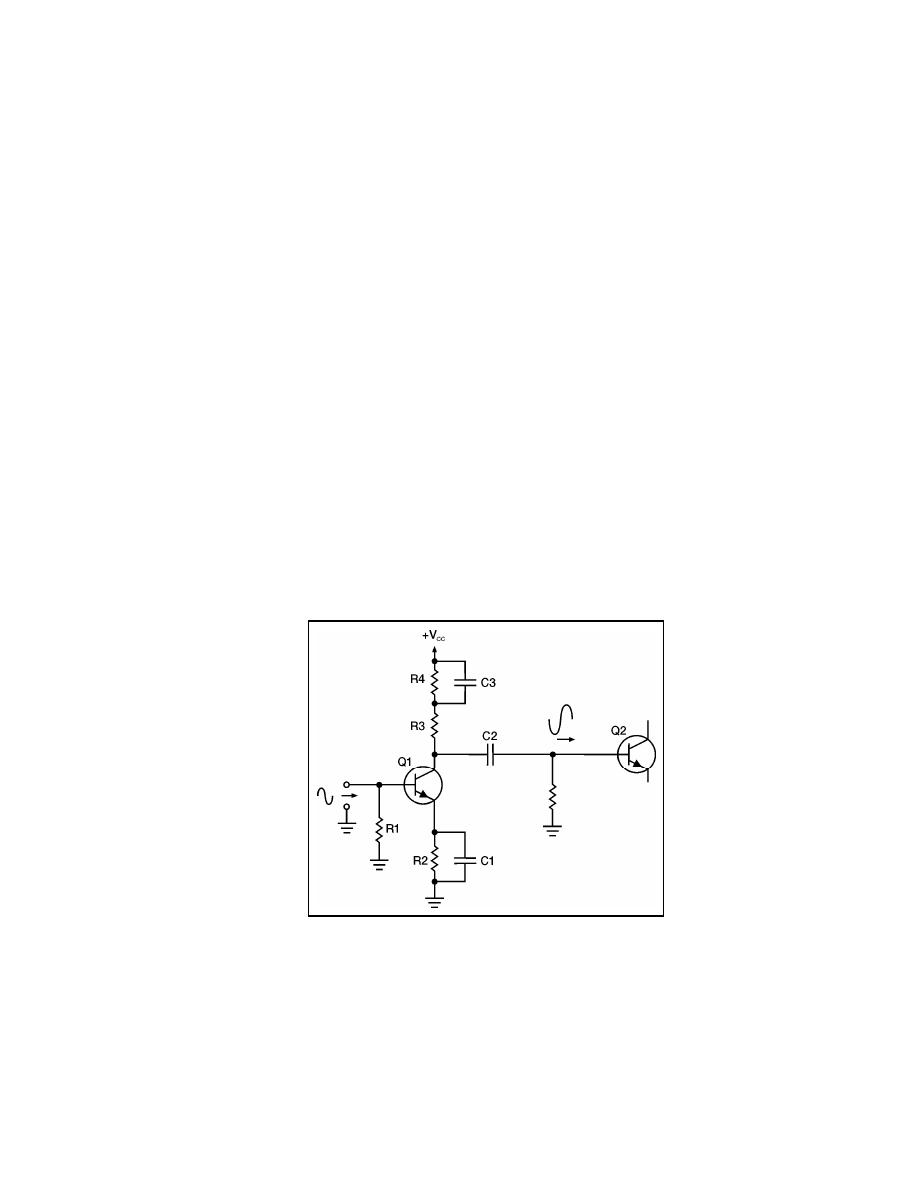
____________________________________________________ Video and Radio Frequency Amplifiers
LOW-FREQUENCY COMPENSATION FOR VIDEO AMPLIFIERS
6-36. You have seen how the high-frequency response of an amplifier can be extended to
6 MHz. You should realize that it is only necessary to extend the low-frequency response
to 10 Hz in order to have a video amplifier. Once again, the culprit in low-frequency
response is capacitance (or capacitive reactance). However, this time the problem is the
coupling capacitor between the stages.
6-37. At low frequencies the capacitive reactance of the coupling capacitor (C2 in Figure
6-7) is high. This high reactance limits the amount of output signal that is coupled to the
next stage. In addition, the RC network of the coupling capacitor and signal-developing
resistor of the next stage cause a phase shift in the output signal. Both of these problems
(poor low-frequency response and phase shift) can be solved by adding a parallel RC
network in series with the load resistor (see Figure 6-8).
6-38. The complete circuitry for Q2 is not shown in this figure, as the main concern is
the signal-developing resistor (R5) for Q2. The coupling capacitor (C2) and the resistor
(R5) limit the low-frequency response of the amplifier and cause a phase shift. The amount
of the phase shift will depend upon the amount of resistance and capacitance. The RC
network of R4 and C3 compensates for the effects of C2 and R5 and extends the low-
frequency response of the amplifier.
6-39. At low frequencies, R4 adds to the load resistance (R3) and increases the gain of
the amplifier. As frequency increases, the reactance of C3 decreases. C3 then provides a
path around R4 and the gain of the transistor decreases. At the same time, the reactance of
the coupling capacitor (C2) decreases and more signal is coupled to Q2. Since the circuit
shown in Figure 6-8 has no high-frequency compensation, it would not be a very practical
video amplifier.
Figure 6-8. Low Frequency Compensation Network
TYPICAL VIDEO AMPLIFIER CIRCUIT
6-40. There are many different ways to build video amplifiers. The particular
configuration of a video amplifier depends upon the equipment in which the video
amplifier is used. Figure 6-9 shows only one of many possible video-amplifier circuits.
23 June 2005
TC 9-62
6-11


 Previous Page
Previous Page
